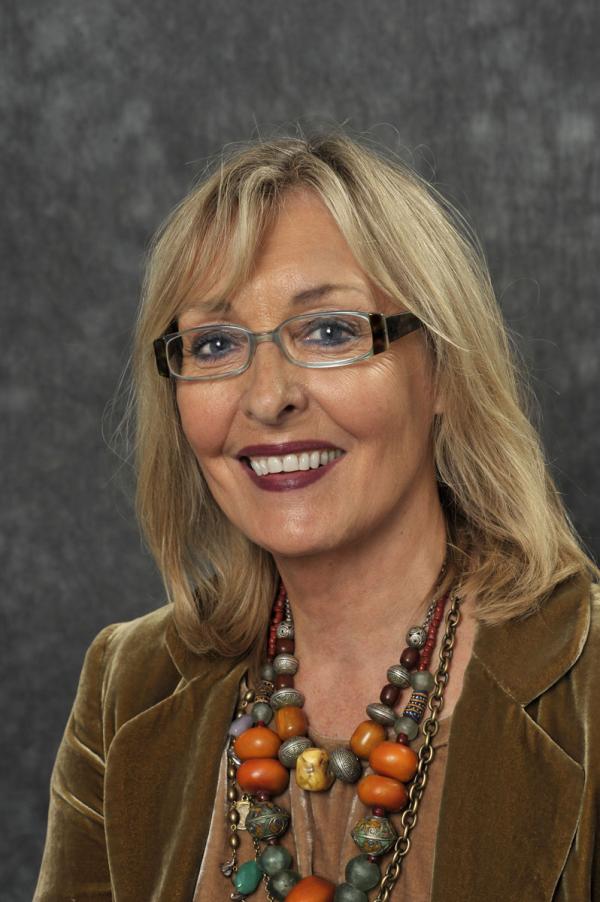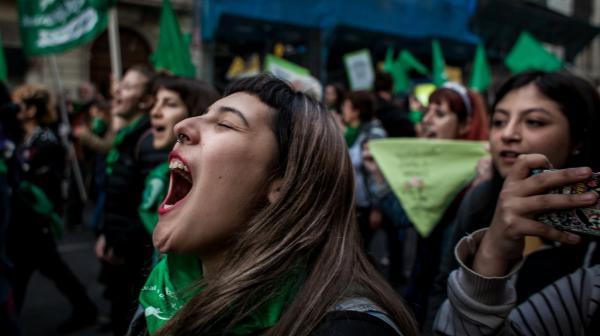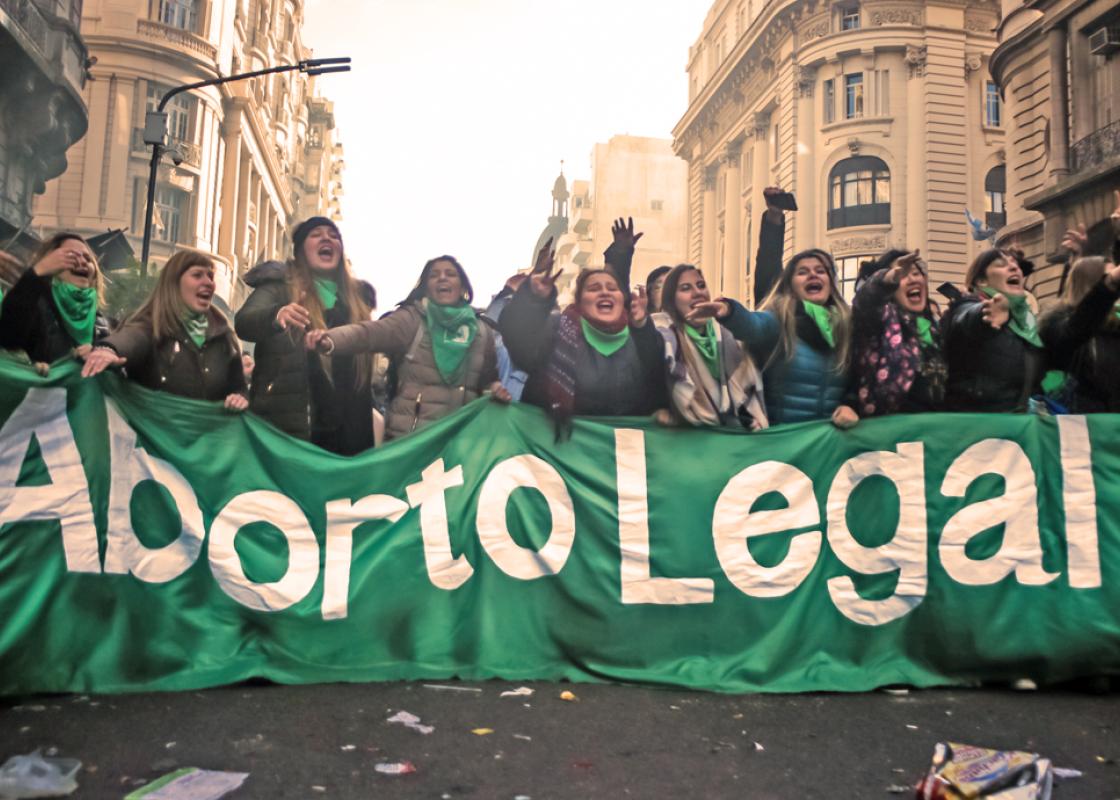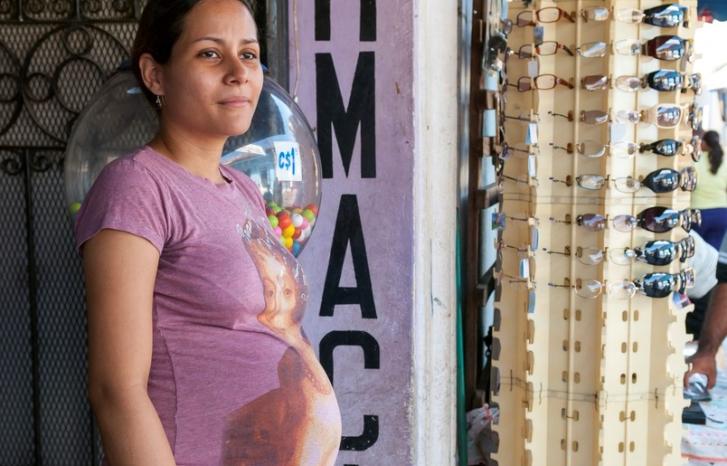On 8 August 2018, seventy-two senators from all over Argentina gathered to discuss and vote over a radical bill. Should pregnant women be granted the right to decide for themselves whether they want to go through with the pregnancy and gain access to safe abortions at the country’s hospitals if they choose to end it? The majority, a total of thirty-eight senators, voted against the bill.

“Even those who voted no this time say that if it doesn’t happen now, abortion will be legalised the next time around,” says Camila Gianella.
She is a researcher at the Christian Michelsen Institute and Centre on Law and Social Transformation in Bergen. She is originally trained as a psychologist, from Lima in Peru, and has done research on mobilisation for human rights and legal changes within health and sexual rights in Latin America. According to her, the social mobilisation around the abortion debate is unique in the region. For the first time, there has been a real political debate about a highly polarised issue.
“Politicians holding opposite views and ideologies have come together with various actors in society. The level of the political debate has been particularly high. It has been open to many different voices, it has been possible for women to converse with politicians, and politicians have met and listened to women who have gone through dangerous abortions,” says Gianella.
National current for draft legislation
Today, abortion is illegal in Argentina, with the exception of special cases in which the woman’s life is in danger or the pregnancy is a result of rape. The proposal to legalise elective abortion within the first twelve weeks of pregnancy (today the proposal is fourteen weeks) was first presented to congress in 2007. At that time, the support was low. Since then, the National Campaign for the Right to Legal, Safe and Free Abortion has presented the draft legislation regularly, with more and more politicians backing the proposal. In 2011, the issue was discussed for the first time in the Department of Justice without reaching any conclusion.
“The feminist movement’s legal strategy has developed over several years. The movement has approached and influenced various political parties, and the debate has taken place at a high political level,” says Gianella.
It has led to a new type of public debate.
The National Campaign and the feminist movement in Argentina have worked with the draft legislation on elective abortion, but also with the implementation of the right to abortion in cases of rape or when the mother’s life is in danger. This right was established once and for all with a Supreme Court ruling in 2011. The case involved a fifteen-year-old girl from Comodoro Rivadavia who became pregnant after being raped by her stepfather. She had an abortion, representatives from the anti-abortion movement sued her, and the Supreme Court ruled in the girl’s favour. Gianella emphasises that cases such as this one have contributed to an important awakening.
“It has led to a new type of public debate. The feminists work to show that they don’t promote abortion as such, but that the criminalisation of abortion may have horrible consequences for women who cannot access abortion in a legal and secure way.”
Over the years, the feminists have presented the same arguments: elective abortion is about human rights for women, about autonomy and about public health. The only difference is that they are being heard now.
“This view has come to represent common sense. Academics, journalists and activists have repeated the same arguments over and over, and now they are spreading.”
Feminist mass mobilisation
There is a strong tradition for street demonstrations in Argentina. The green scarf that the movement has chosen as its symbol turns the demonstrations into oceans of green – also referred to as ‘panuelazos’. On 8 August, two million people were expected to take to the streets across the country.
Argentinians very easily take to the streets – they always have.
Kristi Anne Stølen is a social anthropologist and professor emeritus at Centre for Development and the Environment at University of Oslo. She has worked in Argentina since the 1970s. According to her, the mobilisation is characteristic for the country.
“The result is a real pity. But there will certainly be more chances. The supporters won’t give up that easily,” she says.
“Argentinians very easily take to the streets – they always have. And they do so despite the fact that they have been under a dictatorship. In Guatemala, for instance, demonstrating in the streets involves a bigger risk, but the Argentinians will not be stopped. There’s a very particular spirit and a people who is used to standing up and fighting for their rights.”

In 2016 and 2017, Argentinians mobilised for another cause. Under the headline and the hashtag #NiUnaMenos, meaning ‘not one less’, following a comment from a male politician that a murdered woman was but one less, una menos, there have been enormous protests that have even spread to other Latin American countries.
“NiUnaMenos put feminism on the agenda and has made people more aware of violence against women, the fact that women are killed and abused, and that society needs to do something in order to protect women,” says Camila Gianella.
“Abortion has become part of this. Therefore, NiUnaMenos is also a milestone in the fight for abortion rights. The feminist movement showed that they managed to mobilise on a common platform.”
She emphasises that it is important to recognise who should be given credit for the proposal reaching as far up in the system as it did.
“The movement should have all the credit. No particular individuals, but many individuals who have worked together as a social movement.”
Despite the fact that the movement did not succeed and the legislation on abortion will not change now, the process has ripple effects in the entire Latin American region. Many who visit Latin America regard Argentina as more ‘modern’ than other countries in the region. They have undertaken progressive legal changes concerning both same-sex marriage and change of gender identity. Gianella explains that there are regional differences, and many issues are much better facilitated in Argentina than in other countries.
“In Argentina, abortion has already been discussed for many years, which is a result of hard work. The fact that so many people have organised to fight violence against women also provides popular, and consequently political, authority behind the demand.”
“The strategy depends on the national context and the political climate. In Brazil for instance, in which there is an ongoing political crisis, it is much more difficult to have these debates.”
Strong resistance
The major enthusiasm for legalisation has however led to even stronger resistance against women’s right to elective abortion. During the spring and the summer, the resistance has become more violent.
“It is worrying that the success on the yes-side has generated more violence from the anti-abortion movement. Teachers who have expressed support for the proposal have lost their jobs. Female students have been expelled from schools and universities, and people have been attacked on the street for waring the green scarf,” says Gianella.
Such cases reflect that the anti-abortion movement feels powerless, she explains. This movement also has close ties to the conservative side in Argentinian politics, which has had a more liberal inclination towards violence historically, for instance during the military dictatorship that still marks Argentina today.
You don’t hear religious arguments or bible quotes from politicians arguing against abortion.
It is common to explain the resistance against abortion with the Catholic Church’s strong influence on society. Over the past years, evangelical churches have increased both in number and influence, and they are generally conservative, particularly when it comes to abortion. According to Kristi Anne Stølen, the role of the church is particularly important outside the big cities.
“Especially the low church, such as ministers working for the poor and in the slums have many followers and are well respected.”
She thinks it is important to look at the country as a whole. In Buenos Aires, there is a lot of support for legalisation and the feminist movement has many followers.
“Further north and in the countryside the church is stronger, and there is little support for the proposal. People are highly conservative and very religious in rural areas. In the 70s, people did not even use contraception, as the church advised against it. Some started using birth control in the 80s, although the church was still against it, but then they made sure to confess their sins to the most progressive priests.”

The strong resistance against abortion is particularly strong among the poor, according to Stølen.
“The argument that the human life begins with conception, and that abortion is therefore to be considered murder, has a strong foothold among poor people who are generally more prone to popular religious beliefs or faithfully follow the advice of the church,” she says.
In analyses of gender roles in Latin America, the term ‘machismo’ is often applied to describe the elevation of a dominating and conquering masculinity, and women are either sexualised or idealised as mothers or virgins. But according to Stølen, it is difficult to determine whether this has to do with gender roles or the suppression of Argentinian women.
“Argentinian women are generally quite tough. Already in the 1970s, the first time I visited the country, fifty per cent of the students in Argentinian universities were women. Many have good opportunities in Argentinian society, and many have access to abortion. But they fight for others to have the same opportunities, such as the poor.”
According to Gianella, it is important to bear in mind that the Catholic Church plays a different role in Argentina than in the neighbouring countries.
“The Argentinian Catholic Church had close ties to the dictatorship. Thus, their role in social rights movements is not the same as in countries such as Brazil and Peru, where the church works for human rights. The church is powerful, but not within social movements.”
At the same time, the church is not as visible in the political debate about abortion.
“You don’t hear religious arguments or bible quotes from politicians arguing against abortion. Although Argentina is Catholic, it is more secular than other Catholic countries.”
Politicians from several wings united
The differences between the urban and the rural areas are also present with regard to safe abortions. It is difficult to quantify an illegal practice, but earlier estimates suggest around 460 000 abortions annually in Argentina. Kristi Anne Stølen emphasises that poor women are the ones who are most affected by the ban.
“If you look at the urban areas, at educated, working women, they have easy access to safe abortions. All who have money can get it. It was like this already in the 1970s – those with connections could get an abortion,” she says.
The above-mentioned exceptions to the ban have been part of the constitution since 1922. In the 1990s, the president at the time Carlos Menem wanted to tighten the legislation and introduce a total ban on abortion.

“Ironically, his wife went out in public after their divorce and talked about her own abortion, which she had gone through with her husband’s support,” says Stølen.
Ex-president Carlos Menem is one of the senators who voted against the proposal. In an article in the newspaper La Nacion, he argued that helping the unborn baby and pregnant women in trouble is part of Argentinian values. La Rioja is one of four northern provinces in which the resistance against abortion is total – all three senators voted against the proposal. Most provinces are divided, as is the capital city Buenos Aires. Ex-president Christina Kirchner, who was a stern opponent of elective abortion during her time as the country’s leader, is one of the senators who now voted for the proposal.
According to Camila Gianella, the abortion debate is historical, precisely because it shows that Argentina is an actual democracy. A feminist women’s movement has mobilised for abortion. Yet they have achieved a common platform that includes people with many different political convictions.
“It has been possible to have a proper debate about this, in which all sides have been heard. That is what characterises a democracy, not everybody agrees,” she emphasises.
Legislation is not everything
When the day comes that a new legislation is in place, it must be implemented, and access to health services must be ensured. After the Supreme Court ruling from 2011 that gave women who have become pregnant as a result of rape the right to a safe abortion at a hospital, several women have had bad experiences.
This has shown that change is possible, which is the most important thing.
“We know that hospitals create bureaucratic barriers for those who come in for this procedure. They need to bring the right papers, come at certain times and so on,” Gianella explains.
“But the main concern is the conscience clause for health personnel. What do we do if there are only two doctors at a small hospital and both have signed a conscience clause against providing abortions based on their own personal conviction? This is a difficult matter. It is therefore important to have regulations saying that institutions cannot refuse to provide the procedure. There is a major chance that this might prove difficult in the northern regions. But this is the next step, and the movement is aware of that.”
She thinks the battle will continue.
“Now they have to decide what to do next. This has shown that change is possible, which is the most important thing. I am convinced that they will try again, but it is a process that takes time.”
Translated by Cathinka Dahl Hambro


